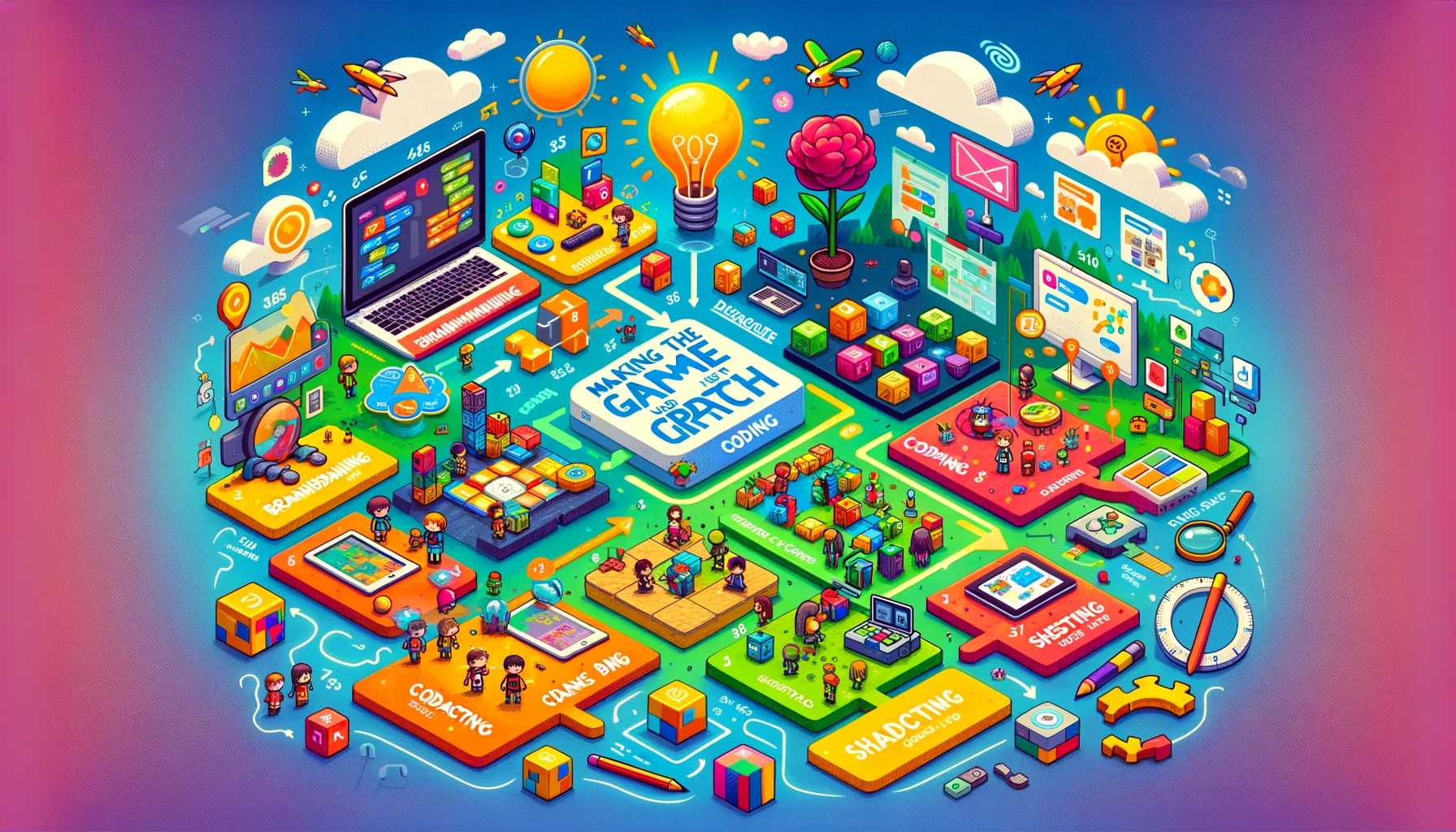Greetings, aspiring game developers and creative minds! Today, we're diving into the wonderful world of game development with Scratch 2.0. Whether you're a novice coder or a seasoned enthusiast, Scratch 2.0 provides an accessible and intuitive platform for bringing your game ideas to life. So grab your imagination and let's embark on a journey to explore the endless possibilities of making games in Scratch 2.0.
Getting Started with Scratch 2.0
1. Understanding the Basics
Before we dive into game development, let's get acquainted with the basics of Scratch 2.0. Developed by the MIT Media Lab, Scratch is a visual programming language that allows users to create interactive stories, animations, and games by snapping together colorful blocks of code. With its drag-and-drop interface and intuitive design, Scratch 2.0 makes it easy for users of all ages to learn the fundamentals of programming while unleashing their creativity.
2. Exploring the Interface
Upon launching Scratch 2.0, you'll be greeted by a vibrant canvas where you can create and edit your projects. The interface consists of several key components, including the stage, sprites, and scripts. The stage serves as the backdrop for your game, while sprites represent characters, objects, and other elements that interact with the stage. Scripts, composed of blocks representing different programming commands, control the behavior and interactions of sprites within the game.
3. Getting Hands-On
Now that you're familiar with the basics, it's time to roll up your sleeves and start creating! Begin by selecting a sprite to serve as the player character or main object of your game. You can choose from a library of pre-made sprites or create your own using the built-in drawing tools. Once you've chosen your sprite, you can add scripts to define its behavior, such as movement, animations, and interactions with other sprites.
Designing Your Dream Game
1. Choosing a Game Concept
The first step in making a game in Scratch 2.0 is to brainstorm and choose a concept that excites and inspires you. Whether it's a platformer, puzzle game, adventure quest, or something entirely unique, let your imagination run wild and think outside the box. Consider the mechanics, storyline, and visual style of your game, and sketch out your ideas on paper or using digital design tools to bring them to life.
2. Building the Gameplay
Once you've settled on a concept, it's time to start building the gameplay mechanics of your game. Use Scratch 2.0's extensive library of blocks to implement movement, collision detection, scoring, and other essential gameplay features. Experiment with different combinations of blocks to achieve the desired behavior for your game elements, and don't be afraid to iterate and refine your designs as you go.
3. Adding Polish and Personality
With the core gameplay mechanics in place, it's time to add some polish and personality to your game. Spruce up your sprites with custom animations, sound effects, and visual effects to bring them to life. Experiment with different backgrounds, colors, and fonts to create a cohesive and visually appealing aesthetic for your game. Consider adding dialogue, cutscenes, or other narrative elements to enhance the storytelling and immersion of your game experience.
Sharing and Showcasing Your Creations
1. Testing and Debugging
Before you unleash your game upon the world, it's crucial to thoroughly test and debug it to ensure a smooth and enjoyable player experience. Playtest your game from start to finish, paying close attention to gameplay mechanics, difficulty balance, and any bugs or glitches that may arise. Use Scratch 2.0's built-in debugging tools, such as the "show" and "hide" blocks, to troubleshoot and resolve any issues that may arise during testing.
2. Sharing with the Community
Once your game is polished and ready for prime time, it's time to share it with the world! Publish your game on the Scratch website, where it will be accessible to millions of users around the globe. Share your game on social media, forums, and online communities to reach a wider audience and gather feedback from fellow creators and players. Celebrate your achievements and showcase your creativity by participating in Scratch challenges, contests, and events.
Conclusion: Unleash Your Creativity with Scratch 2.0
As we conclude our exploration of making games in Scratch 2.0, it's clear that this versatile platform offers endless opportunities for creativity, learning, and expression. Whether you're a beginner looking to dip your toes into the world of game development or a seasoned pro seeking a fun and accessible tool for rapid prototyping, Scratch 2.0 has something for everyone.
So go ahead, fire up Scratch 2.0, and let your imagination soar as you create and share your own interactive masterpieces. Whether you're crafting epic adventures, brain-bending puzzles, or whimsical worlds, the only limit is your creativity. With Scratch 2.0, the power to make games is in your hands—so what are you waiting for? Start creating, start exploring, and start making your game development dreams a reality. Happy coding! 🎮
